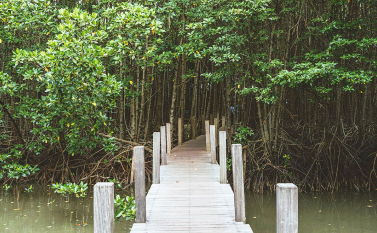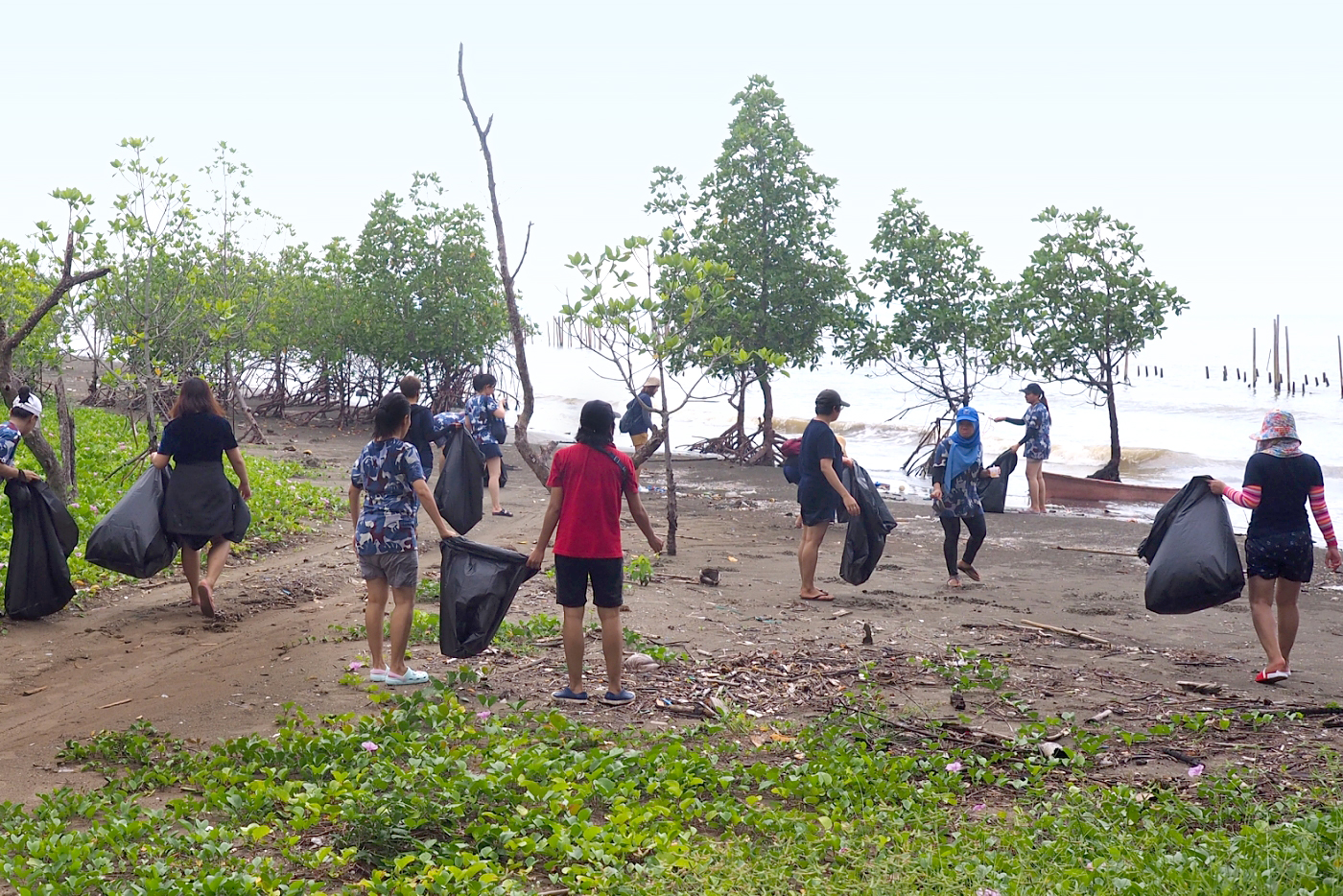Mangrove Replanting

Components
Mangrove forests are home to amazing biodiversity. They provide sea creatures, migratory birds and monkeys with nesting and breeding habitats; help protect shorelines from damaging storms, waves and floods; and filter pollutants to improve water quality. They can also absorb two to four times more carbon dioxide than mature tropical forests. Having a healthy mangrove ecosystem also supports fisheries and the local communities who are dependent on natural resources like fish, clams and crabs. Thus, a disruption in the mangrove ecosystem can have serious repercussions on the environment and people - and such a situation was happening in Eastern Thailand.
The deterioration of the mangroves in Rayong and Chanthaburi has become a crisis. Typhoon Pabuk had partially destroyed the mangroves in Prasae (Rayong) and local villagers in Laem Sing (Chanthaburi) had been encroaching into the land near the mangroves for the past 30 years, turning it into shrimp farms. In 2018, the Department of Marine and Coastal Resources started to reclaim the land and planned to rehabilitate the mangrove forests.
As part of our mission to protect biodiversity and help secure a sound future for the planet, MSIG is collaborating with the Department of Marine and Coastal Resources to restore the mangroves through a three-year project.
Before replanting could begin, we kicked off mangrove clean-ups at Rayong and Chanthaburi - an essential step to help create a conducive environment for the mangrove saplings to grow. Following this, 75 MSIG staff volunteers, 20 locals from the Prasae community in Rayong, and 30 locals from the Bangkachai community in Laem Sing, Chanthaburi, joined hands in replanting the baby mangroves.

With the support of the local communities and authorities, we hope to rehabilitate and ensure the survival and growth of the mangrove wetlands by maintaining and planting more baby mangroves over the next 2 years.
Key achievements to date:
- 21,300 baby mangroves planted
- 11.86 acres restored
- Over 9,000 locals living in and around the mangrove plantation can be protected from tidal surges, erosion and salt water intrusion
- Over 1,000 households who depend on mangrove fisheries as a primary source of income and/or employment can benefit from the mangrove plantation
- 82.5 tonnes of carbon dioxide are expected to be absorbed by the restored mangroves per year





